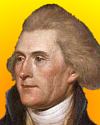
Thomas Jefferson (1743-1826) was a U.S.president, but also an avid astronomer, scholar and inventor. His interests included mathematics, natural sciences, corresponding with such scientists as Joseph Priestley, and sometimes contributing time and money to support progress in scientific fields. Jefferson was interested in the experiments being made in balloons and submarines. He collected and classified fossils.
Jefferson wrote to a correspondent, “Nature intended me for the tranquil pursuits of science, by rendering them my supreme delight.” In a letter to General Kosciusko he said: “The main objects of all science are the freedom and happiness of man.” These, and more insights on Jefferson as a Man of Science appear in a Preface to The Writings of Thomas Jefferson.
As you read it, you are sure to enjoy finding out more about the scientific interests of this American President. He held that, “Science is more important in a republican than in any other government.” You can draw your own conclusion whether in our age, he would be a climate change denier, and whether it would be better for the world to have another American President now with his commitment to the principles of science.

On 4 Jul 1790, Sir George Everest was born. Yes, you’ve heard that name for a mountain in the Himalayas - Mt. Everest. And yes, it is named after him. But do you know why? Today's book pick is: The Great Arc: The Dramatic Tale of How India was Mapped and Everest was Named, by John Keay. In fact, Sir Everest never even saw Mt. Everest—he was too busy as surveyor-general of India with his obsession: the Great Indian Arc of the Meridian, a benchmark series of measurements running from India’s southern tip up to the Himalayas. The cantankerous Colonel headed an army of men, instruments, elephants and horses hauling a half-ton theodolite and braving tiger-infested jungles. But there is more to tell of the of his monumental ego, and the impact of the project on the Indians who living in its path. Along the way, the author paints images of the landscapes and climate and brings to life the personalities of the survey. It took the better part of a century, and Everest took over after the death of William Lambton who had started the work, that was in fact his idea.
It is available from Amazon, typically about New from $20.25. Used from $4.71. (As of earlier time of writing - subject to change.)
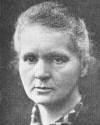 | I am among those who think that science has great beauty. A scientist in his laboratory is not only a technician: he is also a child placed before natural phenomena which impress him like a fairy tale. We should not allow it to be believed that all scientific progress can be reduced to mechanisms, machines, gearings, even though such machinery has its own beauty. |
 | Reason and free inquiry are the only effectual agents against error. |
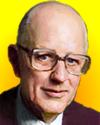 | A good scientist is a person in whom the childhood quality of perennial curiosity lingers on. Once he gets an answer, he has other questions. |
| Before you look at today's web page, see if you can answer some of these questions about the events that happened on this day. Some of the names are very familiar. Others will likely stump you. Tickle your curiosity with these questions, then check your answers on today's web page. | |
| Births | |
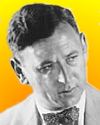 | An American cartoonist was born 4 Jul 1883 who satirized the American preoccupation with technology. His name became synonymous with any simple process made outlandishly complicated because of his series of “Invention” cartoons which use a string of outlandish tools, people, plants and steps to accomplish everyday simple tasks in the most complicated way. Can you name this man? |
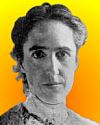 | Henrietta Swan Leavitt, born 4 July 1868, was an American astronomer known for her discovery of the relationship between period and luminosity in Cepheid variables. These are pulsating stars that vary regularly in brightness in periods ranging from a few days to several months. In 1912, she announced what has since become known as the famous Period-Luminosity relation. What can be calculated using the Period-Luminosity relation? |
| Deaths | |
 | Marie Curie (1867-1934) died of radiation poisoning before the need for protection was known, while she discovered two new elements, polonium and radium. Within two generations, her family won several Nobel awards. How many Nobel Prizes were won by two generations of her family? |
 | Thomas Jefferson (1743-1826) was a U.S. president with a deep interest and knowledge in science and invention. He helped establish paleontology in the U.S. He collected and classified fossils. He filed a paper on 10 Mar 1797 with the American Philosophical Society, announcing a fossil discovery from his home state of Virginia. It was an extinct species now known by his name. Can you name his most famous fossil discovery and/or what type of organism it was and/or whether his paper was filed before, during or after his term as President? |
| Events | |
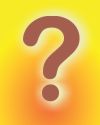 | On 24 Jul 1054, Chinese and other astronomers saw a supernova, a violently exploding star that was visible in daylight for 23 days and at night for almost 2 years. Rock paintings in North America suggest that Indians in Arizona and New Mexico saw it. There are no European records of the event. Can you name the nebula in the constellation Taurus that is believed to be remnants of this supernova? |
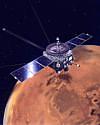 | On 4 Jul 1998, a country launched a spacecraft to become the third nation to reach for Mars. The spacecraft made two fly-bys of the Moon in Sep and Dec in order to reshape its trajectory for an intended arrival in a highly elliptical Mars Orbit in Oct 1999. Unfortunately, the attempt failed, and the plans were changed to alter the spacecraft’s trajectory to reach Mars in 2003. Its mission was to measure the interaction between the solar wind and Martian upper atmosphere. Which country was making this attempt to visit Mars? |
 | In 1997, the Mars Pathfinder, an unmanned U.S. space vehicle, reached the Martian atmosphere. The descent was braked by a heat shield, a parachute and rockets. Using a new NASA effort for “cheaper, faster, better,” the Mars Pathfinder used airbags to cushion its landing on the surface. It carried Sojourner, a 10 kg (22 lb) wheeled rover device designed to travel slowly across the surface of Mars taking photographs and collect other scientific data. How many months did it take to travel from Earth to Mars? |
Fast answers for the previous newsletter for July 3: finding the surface with minimal area determined by a fixed boundary • Peking Man • Major William Crawford Gorgas • Citroën • Midway Island • John Couch Adams.
 If you enjoy this newsletter, the website, or wish to offer encouragement or ideas, please send feedback by using your mail reader Reply button.
If you enjoy this newsletter, the website, or wish to offer encouragement or ideas, please send feedback by using your mail reader Reply button. Your click on a Facebook, StumbleUpon, or other social button on the site webpages is also a welcome sign of appreciation. Thank you for using them.
© This newsletter is copyright 2020 by todayinsci.com. Please respect the Webmaster's wishes and do not put copies online of the Newsletter — or any Today in Science History webpage. (If you already have done so, please remove them. Thank you.) Offline use in education is encouraged such as a printout on a bulletin board, or projected for classroom viewing. Online, descriptive links to our pages are welcomed, as these will provide a reader with the most recent revisions, additions and/or corrections of a webpage. For any other copyright questions, please contact the Webmaster by using your mail reader Reply button.
--
If you do not want to receive any more newsletters, Unsubscribe
To update your preferences and to unsubscribe visit this link
Executive Real Estate Business Class
-
"It was like a man with wings. It wasn't like anything you'd see on TV or in a monster movie." ...
About the publisher
Search This Blog
Blog Archive
-
▼
2020
(1542)
-
▼
July
(200)
- PHOTOGRAPHY: The danger of documenting sharks
- Meet The Serial Killer Who Ate His Victims Because...
- The Roundup Top Ten from History News Network
- On This Day for July 31 - Lunar Roving Vehicle fir...
- Newsletter for Friday 31 July.
- Lockdowns killing more children than COVID + Docto...
- YOUR WEEKLY ESCAPE: Revisiting an iconic Nat Geo c...
- July 31: The Pilgrim Fathers Depart and the Battle...
- ANIMALS: The dog that got COVID-19
- On This Day for July 30 - Death of Otto von Bismar...
- Newsletter for Thursday 30 July.
- Frontline Docs 2nd Video Press Conf at SCOTUS We h...
- BREAKING NEWS: First U.S. dog to test positive for...
- July 30: First Defenestration of Prague, the 1st O...
- Demystified: Why Do Wolves Howl?
- The Champs Are Back on Forged in Fire Tonight
- SCIENCE: A rush to Mars during a rough patch at home
- Breaking News from History News Network
- On This Day for July 29 - National Aeronautics and...
- Newsletter for Wednesday 29 July.
- All Social Media Censor Frontline Docs COVID Video...
- July 29: Spanish Armada Scattered and Taft's Secre...
- TRAVEL: How to stay safe if you need to travel
- On This Day for July 28 - Beginning of World War I...
- Newsletter for Tuesday 28 July.
- Video Presentation from Washington Summit: America...
- July 28: Robespierre Guillotined, Austria-Hungary ...
- HISTORY: How the vice presidency became critical
- Enjoy Summer with Nat Geo Kids Magazine
- New This Week on History News Network
- On This Day for July 27 - Terrorist attack at Atla...
- Newsletter for Monday 27 July.
- COVID Propaganda & Tyrannical Edicts Affecting Men...
- July 27: Walter Raleigh Brings Tobacco, the Atlant...
- FAMILY: Can you transfer your ‘retro fun’ to your...
- The 10 greatest discoveries made by the British pu...
- On This Day for July 26 - Suez Canal seized, John ...
- Newsletter for Sunday 26 July.
- CDC says actual # of cases is up to 13X higher tha...
- July 26: 1st Muslim Civil War, Pizarro's Royal Cha...
- The Compass: Greece
- On This Day for July 25 - American advance into Ca...
- Newsletter for Saturday 25 July.
- VIRUS UPDATE: What does COVID-19 do to a child's b...
- July 25: The 1st Steam Locomotive, Mussolini Dismi...
- PHOTOGRAPHY: The photo that shocked a nation
- This Hardened Blob Of Nuclear Waste Could Kill You...
- On This Day for July 24 - Beginning of Mata Hari's...
- The Roundup Top Ten From History News Network
- Newsletter for Friday 24 July.
- Medical Journal: make the vaccine Mandatory! + Fre...
- YOUR WEEKLY ESCAPE: The man who claims to be Jesus...
- July 24: Cartier Lands in Canada, Mary Queen of Sc...
- ANIMALS: Let’s not forget this other catastrophe
- Demystified: Are Dogs Really Color-Blind?
- On This Day for July 23 - Egyptian monarchy topple...
- Newsletter for Thursday 23 July.
- listen to Dixie Brogdon Hopson tells how the hospi...
- July 23: Upper and Lower Canada United and the Bre...
- SCIENCE: The joy of vintage comforts
- A Puzzling Challenge on Forged in Fire Tonight
- Explore King Tut's tomb with National Geographic H...
- Breaking News from History News Network
- On This Day for July 22 - Deng Xiaoping reinstated...
- CDC Knows Masks and other methods don't work to st...
- Newsletter for Wednesday 22 July.
- July 22: First Congress of Vienna and Spoonerism
- TRAVEL: When tourism returns will it be better?
- Enjoy Summer with Nat Geo Kids Magazine
- On This Day for July 21 - Egyptians defeated in th...
- Newsletter for Tuesday 21 July.
- July 21: 1st Battle of Bull Run, the Trans-Siberia...
- HISTORY: John Lewis always stood for the same thing
- New This Week on History News Network
- On This Day for July 20 - First Moon landing, Sir ...
- Newsletter for Monday 20 July.
- What Scientific Study Shows 6 feet distance or "ma...
- July 20: On This Day in History
- FAMILY: Searching for patience
- Anne of Cleves: Henry VIII's most successful queen?
- On This Day for July 19 - U.S. women's suffrage mo...
- Newsletter for Sunday 19 July.
- Mask Truth Part 2, Data by Nations shows Hydroxych...
- July 19: 1st US Women's Rights Convention and V fo...
- The Compass: Colombia
- On This Day for July 18 - Publication of Mein Kamp...
- Newsletter for Saturday 18 July.
- Enough! Mask Truth, re-Creating you! the intended...
- CORONAVIRUS SPECIAL EDITION: What type of person d...
- July 18: Spanish Civil War Begins and 7 Years of K...
- PHOTOGRAPHY: Showing a nation losing its drinking ...
- How Julia Child Went From World War 2 Spy To Belov...
- Introducing Expedition: Learn! A New Way to Help K...
- The Roundup Top Ten for July 17, 2020
- On This Day for July 17 - Beginning of the Spanish...
- Newsletter for Friday 17 July.
- July 17: Execution of the Romanovs and a Stormy Bi...
- YOUR WEEKLY ESCAPE: An intimate look inside a mode...
- ANIMALS: The trouble with 'retired' chimps
- Man vs. 800-Pound Beast! Watch New Episode of Alon...
-
▼
July
(200)
-
Blogroll
-
About
HistoryFact










0 comments:
Post a Comment